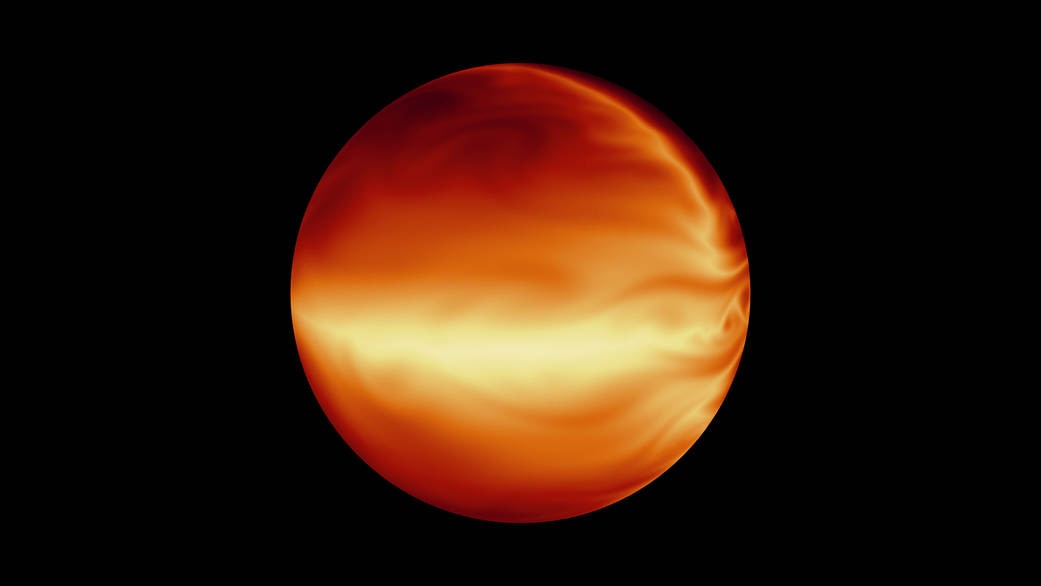Create a free profile to get unlimited access to exclusive videos, sweepstakes, and more!
Bring a towel, because the hitchhikers’ guide to hot Jupiters now exists
A new field guide to hot jupiters' atmospheres was created using secondary eclipsing.

While it isn’t technically towel day, it might as well be, since there is now a field guide to the scorching gaseous exoplanets otherwise known as hot Jupiters.
Hot Jupiters are exactly what they sound like. These gas giants are around the size of Jupiter, but orbit at breakneck speed, dangerously close to their stars (where they could possibly get eaten). That explains the desperate need for air conditioning if you actually were to go there. While the new guide to hot Jupiters is more for identifying them than a map of tourist attractions in space, it will tell the James Webb Space Telescope (JWST) and other future telescopes what they are looking at.
If you’re going to hitchhike to a planet, you have to know what you’re getting into, besides a possibly sketchy spaceship. University of Arizona researcher Megan Mansfield and her team used Hubble observations to find out about the the planets’ atmospheres sby using secondary eclipsing. They recently published a study in Nature Astronomy.
“Secondary eclipse observations involve looking at transiting planets, which pass in front of and behind their star from our perspective,” Mansfield told SYFY WIRE. “The planet passes behind the star in a secondary eclipse, so we are seeing the dayside of the planet disappear behind the star.”
Only the daysides of hot Jupiters appear to vanish in a secondary eclipse because they are tidally locked. That happens when one body orbits way too close to another, and also when there is synchronous rotation, which means one of the bodies makes a complete rotation in the time it takes for it to orbit the other. You can see this in action with our own Moon, whose dayside always faces Earth while its nightside faces away from us.
Because hot Jupiters and their star systems are too far away to make out their star and planet on its own, the planet needs to be caught at different points in its orbit for secondary eclipsing, especially when it wanders out of view. During the time the planet is not visible, a measurements of only the star’s light are taken. That light is then subtracted from the combined light of both star and planet. What is left is the light given off by the planet.
The daysides of Hot Jupiters emit so much heat and light that it can be measured from Earth. Because of this, secondary eclipse observations can be used to investigate how hot their atmospheres are and what they are made out of. Hubble can still gather data on the emission spectra of such distant objects even if it cannot see them directly. How hot their atmospheres are and what types of gas molecules are floating around in there determine the wavelengths they emit light at.
"We were looking at wavelengths where water absorbs some light, as well as wavelengths where it wasn’t absorbing the light as much,” said Mansfield. “At the wavelengths where water doesn’t absorb, we can see light coming out of the planet from deeper in the atmosphere.”
Wherever water absorbs light, it also obscures any light from the atmospheric depths of a hot Jupiter. Seeing these planets through different wavelengths also showed Mansfield and her team the layers of their atmospheres, which gave them enough information to create temperature profiles for each layer. Their data ended up aligning with models that predicted the conditions in hot Jupiters so well that it is the next best thing to sending something out there to explore them — it would probably never make it within a human lifetime, anyway.
This is only going to enhance what the James Webb telescope will be able to see. While not all hot Jupiters have exactly the same atmospheric composition, since most profiles matched different theoretical models that with varying amounts of carbon and oxygen molecules, what is in the atmosphere can help give an understanding of how these planets formed and evolved. JWST can see in more wavelengths than Hubble, meaning more types of molecules will probably show up. Mansfield also looks forward to eclipse mapping some of these strange planets.
“Eclipse mapping is a technique that can resolve the planet in latitude and longitude,” she said. “With JWST, we’ll be able to see the temperatures of these planets at a few different latitude and longitude points, so we can get more detailed information on how their atmospheres look across the dayside.”


























